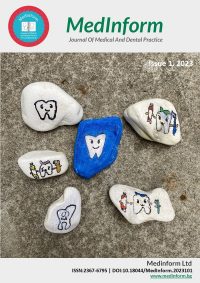Issue One 2023
2023, Vol. 10, issue 1, (January)
Original Article
Contact sensitization to fragrance markers and surfactants/emulsifiers/ emollients among cosmetologists and cosmetology students – a pilot study
Abstract:
Background: Sensitization to cosmetics ingredients is an important problem in occupational and consumer exposures.
Aim: This pilot study evaluates the prevalence of contact sensitization to fragrance markers and surfactants/emulsifiers/emollients as cosmetic ingredients among cosmeticians and cosmetology students and identifies the most common allergens in occupational and non-occupational exposures.
Material and Methods: Skin patch testing with fragrance markers – fragrance mix-I, peru balsam, colophonium, hydroxy-isohexyl 3-cyclohexene carboxaldehyde; surfactants/emulsifiers/emollients – cetearyl glucoside, decyl glucoside, cocamidopropyl betaine, and lanolin alcohol was performed among 109 participants – 37 cosmetology students, 26 cosmeticians, and 46 individuals – controls, occupationally unexposed to cosmetics. In parallel with the standard reading, thermographic examination was performed. The relationship between test-haptens and groups was evaluated by Fisher’s exact test.
Results: Lanolin alcohol was the main contact sensitizer taken for the whole tested population, as well as for the cosmetologists, with significantly higher patch test positivity if compared to the students (p=0,028). Regarding the fragrance markers, for the whole tested population, hydroxy-isohexyl 3-cyclohexene carboxaldehyde was identified as a main sensitizer, followed by Peru balsam. Fragrance mix-I was the main allergen for cosmeticians, with significantly higher prevalence of sensitization if compared to cosmetology students and controls (p=0.005). Regarding the surfactants/emulsifiers, the positivity prevalence to decyl glucoside was significantly higher among the cosmetology students if compared to the controls (p=0,028).
Conclusions: We established high prevalence and risk of contact sensitization to the tested fragrance markers and surfactants/emulsifiers/emollients. In occupational exposure, fragrance mix-I was the main sensitizer. The provision of proper occupational risk information, workplace risk assessment and management, and complex programs for prevention of occupational skin diseases is outlined.
Keywords: contact sensitization, fragrance markers, surfactants/emulsifiers/ emollients, cosmetics, occupational exposure, educational exposure
Authors:
Maya Lyapina; Medical College “I. Filaretova”, Medical University – Sofia;Karolina Lyubomirova; Department of Occupational Medicine, Faculty of Public Health, Medical University – Sofia;
Todor Kundurzhiev; Department of Occupational Medicine, Faculty of Public Health, Medical University – Sofia;
Maya Vizeva; Medical College “I. Filaretova”, Medical University – Sofia;
Evgeni Stanev; Department "Conservative Dentistry", Faculty of Dental Medicine, Medical University – Sofia;
Binnaz Asanova; Medical College “I. Filaretova”, Medical University – Sofia;

